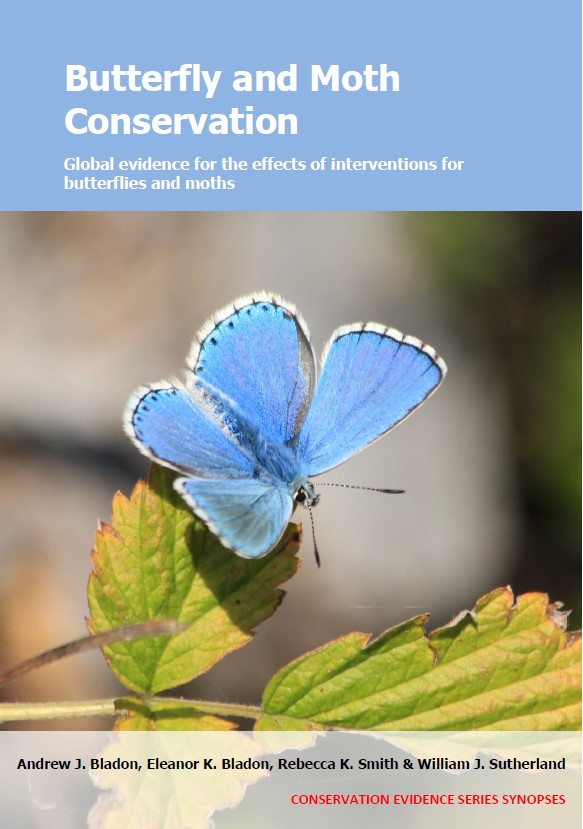Leave uncropped, cultivated margins or plots
-
Overall effectiveness category Evidence not assessed
-
Number of studies: 4
View assessment score
Hide assessment score
How is the evidence assessed?
-
Effectiveness
not assessed -
Certainty
not assessed -
Harms
not assessed
Study locations
Supporting evidence from individual studies
A replicated, randomized, site comparison study in 1986 and 1991 at a farmland and grassland site in Cambridgeshire, UK (Sparks & Parish 1995) found that butterfly abundance and species richness were higher in fields with wider margins between crops in one year but there was no difference in the other year. In 1986, but not in 1991, there was higher butterfly abundance and richness in fields where margins between crops were wider (data presented as statistical results). See paper for details of the effects on individual butterfly species. From May–September in 1986 and 1991, butterflies were surveyed up to once/month in fine weather on ninety-nine 200 m transects along margins between fields of any combination of arable farmland and grassland. Each transect was surveyed 2–4 times in both years. Margin width was measured in both years.
Study and other actions testedA replicated, randomized, paired, controlled study in 2005–2011 on an arable farm in Buckinghamshire, UK (Heard et al 2011) found that land managed under an agri-environment scheme, including uncropped cultivated margins, had a higher abundance, but not species richness, of butterflies and micro-moths than conventional farming, but there was no difference in abundance or species richness of other moths. Butterfly abundance was higher under enhanced Entry-Level Stewardship (ELS) (5,400 individuals/60 ha) and standard ELS (2,000 individuals/60 ha) than under conventional farming (1,400 individuals/60 ha). Micro-moth abundance was also higher under enhanced ELS (79 individuals) than standard ELS (32 individuals) or conventional farming (20 individuals). However, the abundance of macro-moths and threatened moths was similar under enhanced ELS (macro: 126; threatened: 6 individuals), standard ELS (macro: 79; threatened: 5 individuals) and conventional farming (macro: 79; threatened: 6 individuals). Species richness of all groups was similar under enhanced ELS (macro: 20; micro: 11; threatened: 3 species), standard ELS (macro: 20; micro: 8; threatened: 2 species) and conventional farming (macro: 18; micro: 5; threatened: 2 species) (butterfly data not presented). In 2005, a 1,000-ha farm was divided into five 180-ha blocks. Three 60-ha areas/block were assigned to three treatments: enhanced ELS (5% land removed from production, annually cultivated uncropped margins); standard ELS (1% land removed from production); conventional farming (see paper for other details). From May–August 2006–2011, butterflies were recorded four times/year on one 50-m transect/60-ha area, passing through all available habitats. In late-May 2007–2011 and late-July 2006–2011 moths were surveyed using Robinson light traps. One block was surveyed/night, with one trap/treatment.
Study and other actions testedA replicated, randomized, controlled study in 2007–2010 on 28 arable farms in Wessex and East Anglia, UK (Holland et al. 2015) found that farms with enhanced agri-environment scheme (AES) habitats, including naturally-regenerating margins, had a higher abundance of some butterfly species than farms with simpler AES habitats. In early summer, farms with enhanced AES habitats had a higher abundance of blue (Lycaenidae: 0.05 individuals/100 m) and white (Pieridae: 0.46 individuals/100 m) butterflies along boundaries than farms with Entry-Level Scheme (ELS) habitats (blues: 0.04; whites 0.21 individuals/100 m), but a lower abundance of skippers (Hesperiidae) in the AES habitat itself (enhanced: 0.00; ELS: 0.02 individuals/100 m). In mid-summer, enhanced AES farms had a higher abundance of white butterflies (0.69 individuals/100 m), but a lower abundance of brown butterflies (Satyridae: 0.16 individuals/100 m) in the AES habitat, and a lower abundance of blue butterflies (0.05 individuals/100 m) along boundaries than ELS farms (whites: 0.38; browns: 0.49; blues: 0.11 individuals/100 m). In spring 2007, twenty-four farms (12 in East Anglia and 12 in Wessex) were randomly assigned to two treatments: 16 farms with enhanced AES habitat (1.5–6.0 ha of natural regeneration by annual cultivation, floristically-enhanced grass mixes, wildflower strips and wild bird seed mixes); and eight farms with ELS habitat (1.5–6.0 ha of grass margins and game cover (usually maize)). Two additional ELS farms/region, already managed organically with 1.5 ha of ELS habitat, were also studied. From 2008–2010, butterflies were surveyed twice/year on 11 fixed 100-m transects, in mid-May–mid-June and mid-July–early August. Eight transects/site were located in AES habitat, and three transects/site were located on field boundaries away from the AES habitat.
Study and other actions testedA replicated, site comparison study in 2009–2011 in 133 mixed farms in the Central Plateau, Switzerland (Stoeckli et al. 2017) found that farms with more in-field agri-environment scheme (AES) options, including uncropped, cultivated plots, had a similar abundance and species richness of butterflies to farms with fewer (AES) options. Both the abundance and species richness of butterflies on farms with a larger area of in-field AES options was similar to farms with smaller areas of in-field AES options (data presented as model results). A total of 133 farms (17–34 ha, 13–91% arable crops) were managed with in-field AES options, including undrilled patches in crops, wide-spaced rows, cover crops, undersown cereals, use of bar mowers, staggered mowing, no silage and no chemical inputs. Fields without chemical inputs contributed about half of the area of AES options, on average. From May–September 2009–2011, butterflies were surveyed six times on 10–38 transects/farm, totalling 2,500 m/farm. Each transect ran diagonally through a single crop or habitat type, with all available crops and habitats represented. All visits to a farm were completed in a single year, and the species richness was summed across all visits. Total abundance of butterflies was calculated from the number recorded in each habitat, and the availability of each habitat across the farm.
Study and other actions tested
Where has this evidence come from?
List of journals searched by synopsis
All the journals searched for all synopses
This Action forms part of the Action Synopsis:
Butterfly and Moth Conservation
Butterfly and Moth Conservation - Published 2023
Butterfly and Moth Synopsis





)_2023.JPG)














